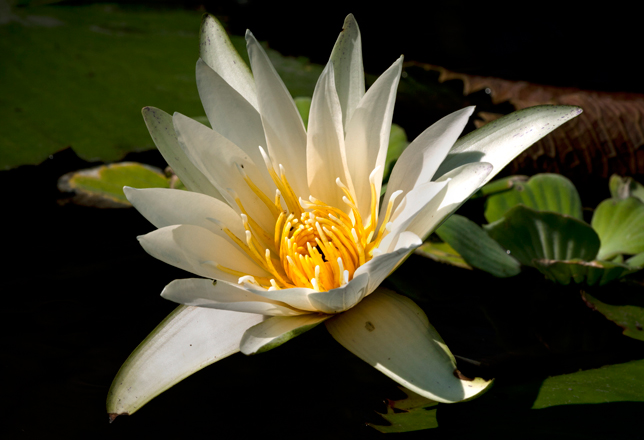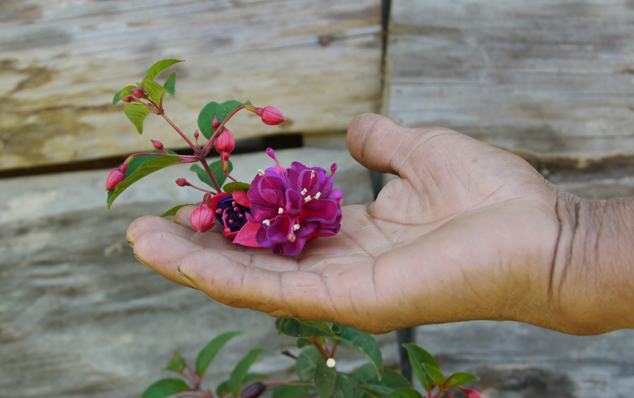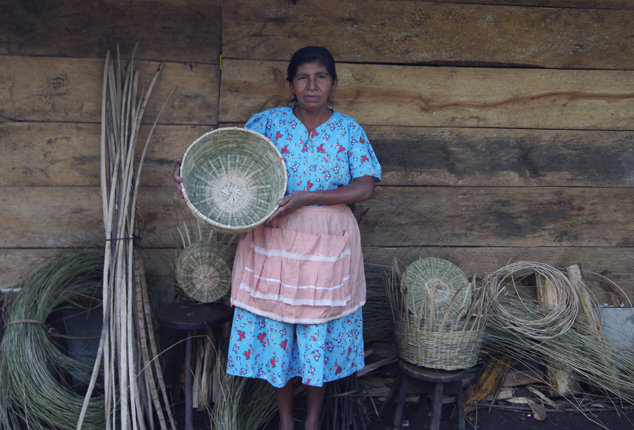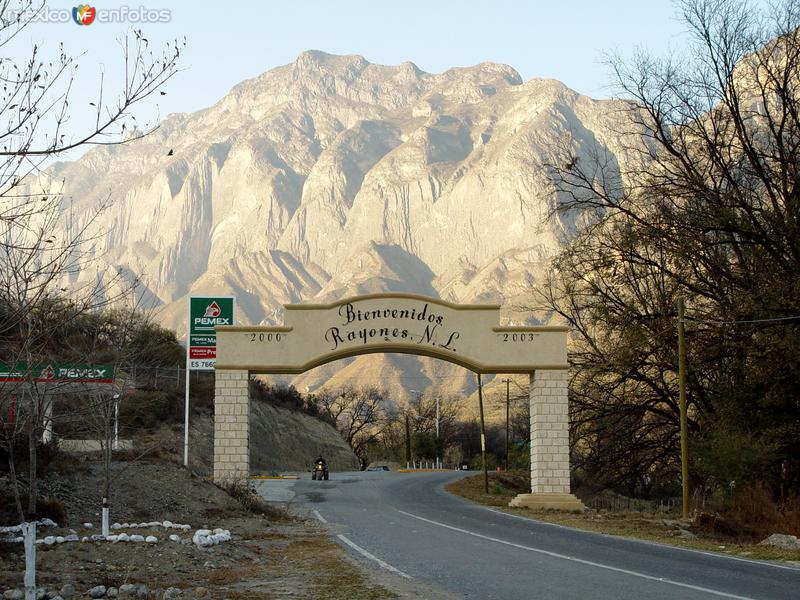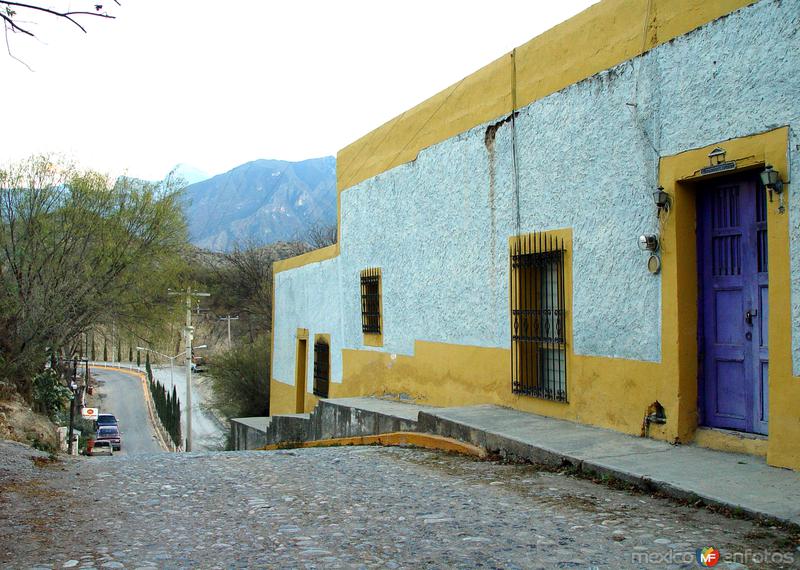This web site is for individuals interested in the iconography of flowers in Mayan art
Mayan murals, stelae sculptures, architectural facades, and painted or incised pottery are decorated with flowers, fruits, vegetables, and sacred trees. Likewise there are depictions in Mayan art of insects, birds, fish, turtles, reptiles, and diverse other species.
If you took every single identification of every plant and animal in the monographs and articles of the last 100 years (and sadly even in the past 40 years), too many of the identifications are not correct. So a major goal of this web site is to provide the raw material: the close-up photos of the flowers and plant parts so that botanists as well as iconographers can have a better chance at recognizing the actual species.
A good example of the rare instances of proper identification is the work of botanist Charles Zidar (Missouri Botanical Garden). But about 95% of the identifications of insects in Mayan art are incorrect. And I bet over 50% of the identifications of flowers (by writers other than Zidar) are in error as well. All of these identifications will be re-written, with photographic evidence, as this web site expands to cover all the pertinent species.
English name: Water lily. Spanish Name: Lirio de Agua. Latin name: Nymphaea ampla. Photo by: Jaime Leonardo, staff photographer 2007-2011 at FLAAR Mesoamerica
If you are an epigrapher, we will also work to provide material useful to you
It is primarily bats, turtles, deer, felines and birds that are the natural species depicted in Mayan hieroglyphs, so most of our work on the iconography of Mayan hieroglyphic writing will be in our separate web site on ethnozoology. But there are occasional flowers and ceiba spines in Mayan hieroglyphs, so we also cover Mayan epigraphy related to plants.
We are building a second, separate, website to cover Mayan ethnozoology. We have been doing extensive photography of insects, arachnids, fish, turtles, bats, felines, venomous toads and other creatures that were of interest to the Classic Maya over the last several years. This Mayan ethnozoology web site should be launched hopefully by the first week of July.
This resource is dedicated to botanists and botany students,
During the 1970's through 1980's, hundreds of students and dozens of professors and researchers came to Guatemala and Mexico to study the plants and animals. They had experiences with local plants and animals they will remember their entire life.
Today, due to the economic recession, it is harder for botanists and students to get to Latin America. And security is a growing concern. So we hope our photographs, notes, and bibliographies will assist botanists and students to experience Guatemala at least via photographs. And over time, we hope they will be able to encounter the plants and animals and ecology of Central America in person.
Costa Rica has the best reputation for national parks and eco-tourism, but frankly Guatemala is so beautiful I still enjoy every second I am in this country. The people in the villages throughout Guatemala are friendly and helpful. Botanists such as Mirtha Cano and Priscila Sandoval share their knowledge. Local people who know their local flowers and unusual fruits for decades, such as Julian Mariona, have shared their information and experience with us every time we visit him at Posada Caribe, one hour upstream from Sayaxche, Petén.
We will tend to publish in PowerPoint, to assist both professors and students
Although you can project a PDF in a classroom, we feel that the horizontal format of a PPT file will be more useful to instructors and students, as well as to interested lay people. The horizontal format of a PowerPoint slide allows us to show more plants side-by-side.
Our first editions will be primarily photographs
We have so many thousands of photographs, that we will prefer to issue these images of flowers, fruits, and vegetables first. Then later we will add more text.
We feel that a picture is truly worth more than a thousand words.
If you are an avid gardener, feel welcome to visit our web site
Whether you are gardening in Antigua Guatemala, Petén, or California, Florida, or Asia, you might enjoy adding some sacred Mayan flowers, or healthy Mayan fruits and vegetables to your garden.
Gardener holding a Fucsia, Fuchsia hybrida. Chilasco, Cobán Guatemala August 2011
For students of religion obviously we wish to provide you useful facts
Incense is a major part of Mayan ethnobotany. Sacred flowers are used in rituals. So the study of religion and plants go together in most cultures, especially prehispanic.
Medicinal plants are helpful to everyone
Producing medicinal plants provides jobs and incomes for the entire production chain. And some medicinal plants provide fewer side affects than potent modern chemical medicines. So the study of medicinal plants is helpful to many people.
But equally well, many native "medicinal" plants are toxic so we do not recommend experimenting on your own.
There are already abundant books and articles on medicinal plants of Mexico and medicinal plants of Guatemala, so medicinal plants are much better known than sacred plants or even edible plants. Thus our focus is on those medicinal plants which also have other uses: for example, manitas, Chiranthodendron pentadactylon, is a major medicinal plant (especially in Verapaz areas) but was a flavoring for cacao drinks a thousand years ago.
For economic development, our comments on species are intended to help
There are endless opportunities for economic development by creating projects whereby botanists and realistic business people provide suggestions to local people on how the local people can grow indigenous plants to improve their livelihood. Note that merely suggesting to local people about some plant is not enough: a realistic business partner should be part of the team.
FLAAR comes from a background in academia but a long time ago we left the "ivory tower" and learned about the real world outside the university walls. In advanced digital imaging FLAAR is a consultant to Fortune 500 companies and major corporations in Europe, Canada, Korea, China, and Taiwan. We would enjoy being able to provide our experience to local villages in Guatemala for them to market indigenous plants first nationally and then internationally. As soon as funding would be available, we are ready, able, and willing to work with joint ventures.
Artist woman showing hand made basket in San Rafael Chilascó, Guatemala August 2011
Source: http://www.maya-ethnobotany.org/


